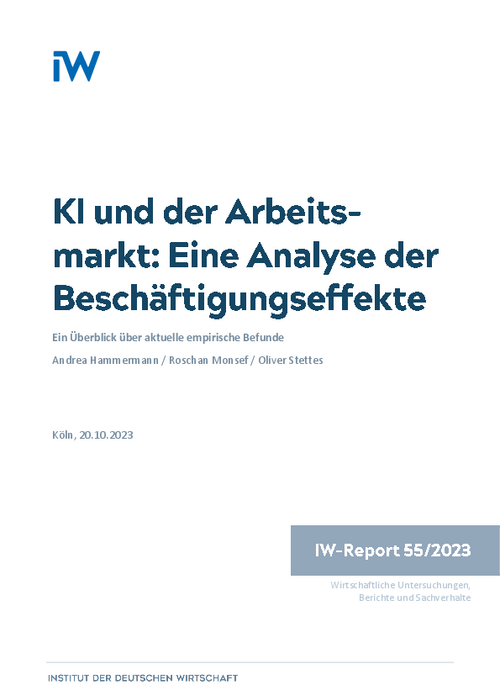It has been about ten years since Frey and Osborne's study on the automation risks of occupations in the USA fuelled the debate on the end of work due to digitalisation worldwide. Since then, numerous scientific studies have been published to examine the employment effects of technology such as robotics.

KI and the Labor Market: An Analysis of Employment Effects

It has been about ten years since Frey and Osborne's study on the automation risks of occupations in the USA fuelled the debate on the end of work due to digitalisation worldwide. Since then, numerous scientific studies have been published to examine the employment effects of technology such as robotics.
Currently, the focus is on artificial intelligence applications, which have come to the attention of the general public through chatbots such as ChatGPT or Google Bard. In the first part of this study, the scientific studies on the labour market effects of AI are presented and the strengths and weaknesses of three different approaches are discussed. These approach the research question by means of i) determining how employees are potentially affected, ii) evaluating job advertisements and iii) using survey data on the use of AI applications. In the second part of this study, the relationship between the use of AI and the actual and expected employee development of companies in Germany is examined empirically. For this purpose, several waves of the IW-Zukunftspanel, a regular company survey, are evaluated in the period between 2019 and 2022 with around 4,300 observations from over 2,800 companies.
The empirical analysis based on the IW-Zukunftspanel does not show a robust correlation between the use of AI procedures and the past as well as the expected future employee development at the company level. The changing signs of the AI coefficient could indicate opposing impact mechanisms via positive productivity effects and substitution effects of human labour, as discussed in the literature. In order to entangle these effects, however, more information would be needed on the type of AI applications in the companies. In summary, the scientific findings in the literature so far do not point to strong negative employment effects. Rather, the evidence suggests that AI has so far largely complemented human labour. However, technological advances of AI processes at the current edge are not yet reflected in the studies and thus research on the employment effects of AI is only at the beginning.

KI and the Labor Market: An Analysis of Employment Effects

More on the topic

Determinants of personnel planning in Germany
The German labor market has been growing since 2005. The dip in the wake of the coronavirus pandemic between 2020 and 2022 is an exception, as the German labor market has reached a record level of 45.9 million people in employment by 2023.
IW
What factors influence the career ambitions of people with disabilities?
Many companies in Germany report having difficulties not only in recruiting employees, but also in filling vacant management positions.
IW